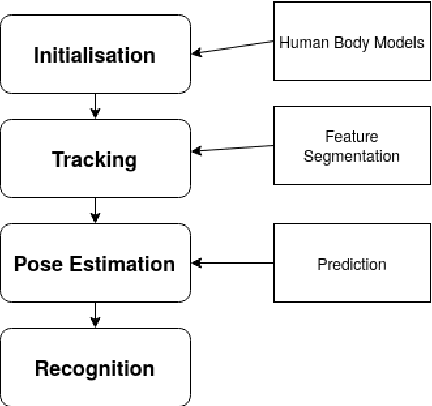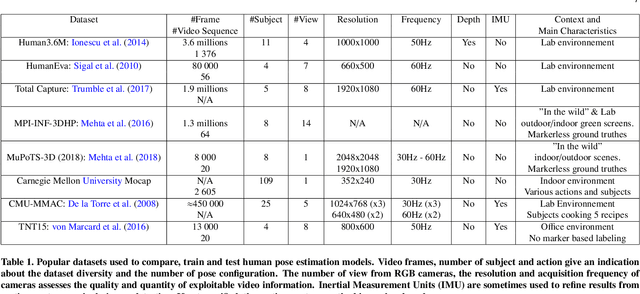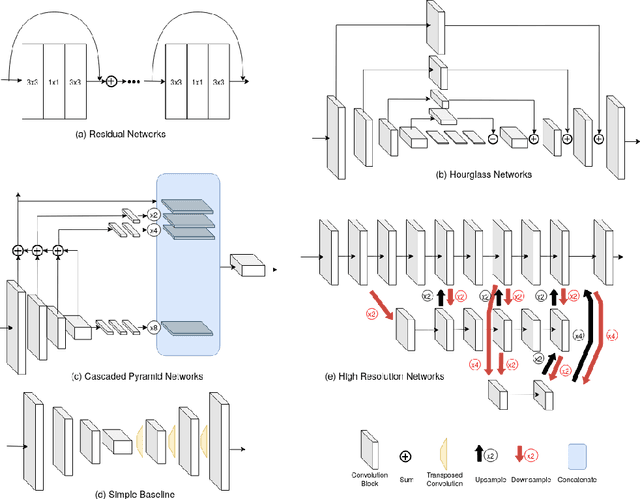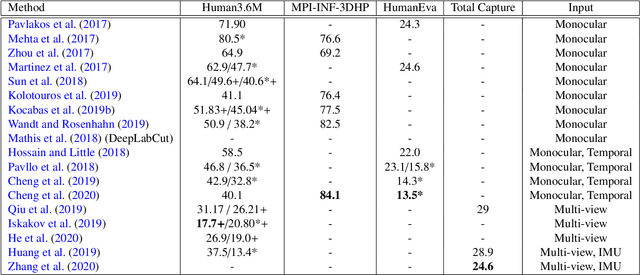Yann Desmarais
A review of 3D human pose estimation algorithms for markerless motion capture
Oct 19, 2020



Abstract:Human pose estimation (HPE) in 3D is an active research field that have many applications in entertainment, health and sport science, robotics. In the last five years markerless motion captures techniques have seen their average error decrease from more than 10cm to less than 2cm today. This evolution is mainly driven by the improvements in 2D pose estimation task that benefited from the use of convolutional networks. However with the multiplication of different approaches it can be difficult to identify what is more adapted to the specifics of any applications. We suggest to classify existing methods with a taxonomy based on the performance criteria of accuracy, speed and robustness. We review more than twenty methods from the last three years. Additionally we analyze the metrics, benchmarks and structure of the different pose estimation systems and propose several direction for future research. We hope to offer a good introduction to 3D markerless pose estimation as well as discussing the leading contemporary algorithms.
 Add to Chrome
Add to Chrome Add to Firefox
Add to Firefox Add to Edge
Add to Edge